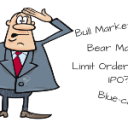In my first few Screening for Value articles, I looked at results from one of the most straightforward value screens, 52-week lows. In this article, I introduce another classic: Low Price-to-Book.
Book Value is calculated by taking the total assets on a company's balance sheet and subtracting the total liabilities. It is also known as Shareholders' Equity, the term you will typically see in a set of accounts. It can be thought of as what the company believes it would receive if it sold off all its assets and paid off its liabilities. Unfortunately, it is doubtful that shareholders would receive book value in a liquidation situation. Many of the assets, such as inventories, are unlikely to be worth the amount recorded in the accounts if sold off rapidly. Book Value also includes the value of intangible assets such as goodwill that arises when a company acquires another company for more than its book value or capitalised development expenditure. These intangible assets may be worth nothing to someone else.
For this reason, many value investors choose to look at Tangible Book Value instead, also known as Net Tangible Asset Value, which excludes those intangible assets in the calculation. Again, it can be tempting to think that a company whose Net Tangible Asset Value is higher than the current market capitalisation, and hence has a Price-to-Tangible-Book-Value of less than one, can be profitably liquidated. This may be the case sometimes. However, liquidating a business still comes with the problem of receiving "fire-sale" values on assets. The costs of liquidating a company can also be high enough to erode any profits that would be made. However, trading below tangible book value implies that these assets are currently unproductive. In such cases, management teams face pressures to improve their efficiency, reduce their working capital, invest in better products, or shut down unprofitable business lines. If those assets can be made productive or sold off to someone else who can use them productively, then a company is likely to return to trading at a premium to its book value, generating a profit for investors.
That's the theory. Does it work? As you may know, Price-to-Book-Value has been one of the most widely studied factors by finance academics. In my opinion, Book Value has been a preferred metric partly because it is easy to find in the accounts and accounting standards on this measure…






